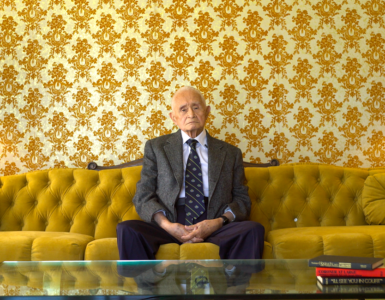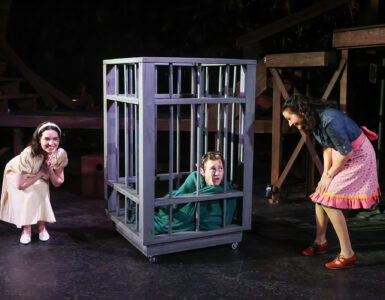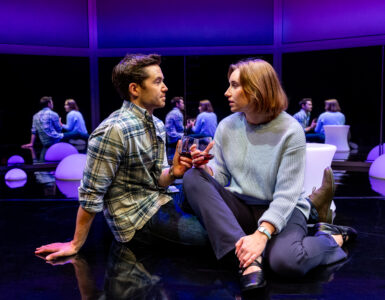In a career spanning more than 40 years, director Gillian Armstrong has gifted the world of cinema with some marvelous period pieces (My Brilliant Career, Little Women, Charlotte Gray) that were distinguished by her keen sense of place, right down to the set designs and the costuming of her actors.
She’s also made a number of absorbing, character-centered documentaries, so when producer Damien Parer approached her to make a film about a fellow Australian, Hollywood costume designer Orry-Kelly (birth name Orry George Kelly), it seemed like an ideal match.
Armstrong was embarrassed to confess that she’d never heard of him, and she realized that his name had been mostly forgotten by others in the industry as well.
How could the memory of a man who designed iconic costumes for such luminaries as Bette Davis, Marilyn Monroe and Ingrid Bergman be lost to time? She was determined to set the legacy of Orry-Kelly to right once and for all.
His story is a vital and fascinating part of Hollywood history, and Women He’s Undressed brings it all to life. It’s an appropriately cinematic tribute to Kelly, interspersing cheeky commentary by the designer (played by actor Darren Gilshenan) with vintage clips, photos and new interviews with stars he dressed, including Angela Lansbury and Jane Fonda, as well as other costumers and historians.
Armstrong spoke with ArtsBeatLA about the film by phone from her home in Australia. She also offered some well-measured opinions about the current state of the industry.
You stated that you didn’t know Orry-Kelly when you were first approached for this project.
No, I’d never heard of him. I’d certainly heard of his films (Dark Victory, Casablanca, Some Like It Hot, Auntie Mame and so many more), and that’s what made me think — “This man deserves to have his story told!”
What was it about his story that inspired you to make the film?
My producer, Damien Parer, came to me and asked me if I’d be interested in doing a film about Orry-Kelly, and I said, “Who’s he?” And it was really my shame when I read his credits and realized, “My God! All these films, these amazing films, and this guy came from this small coastal town in Australia and we’ve never heard of him?” Really, I made it because of my own shame and lack of knowledge. After all, I am in the film business and I do know a bit about costumes.
I thought that if I didn’t know about him then surely no one else in Australia would either. Costume designer Catherine Martin and director Baz Luhrmann were the only people I came across who did. I’m always interested in the character — who is this person who came from nowhere and ended up as one of the leading costumers of all time? He designed some of the most iconic films in history. How did he get there?
So those facts attracted me, as well as my own appreciation for the costume designer’s work, because I have collaborated with some of the best in the world on my own films.
People don’t realize how much they do, all the magic, and the fact that it really is an art. Most people think it’s about making people look pretty, but it’s much more than that. Doing this film merged my interest in costume design with my interest in this man and his work.
What were some of the innovations he brought to the art of costuming for the movies?
He actually was one of the early proponents for period authenticity and he had an interest in both hair and costume, as I do. It used to be that when a film was made in the ’30s, people would have a ’30s hairdo and a ’30s costume even though they were in a film set in the 1860s. He and Bette Davis had a thing about authenticity and getting period right.
And you saw the other magical things he could do by turning 5’1″ Natalie Wood into the more statuesque Gypsy Rose Lee. Other people would have been using padding and other things to make actors look bigger, smaller or taller, but that Gypsy costume that we dissect in the film shows his amazing cleverness, because she seems so tall onstage! So, yes, he was very clever with structure.
Do you consider him a pioneer of sorts?
I wouldn’t say it’s about being a pioneer. It’s about being a great talent and having a great eye and imagination. And humor — look at the fabulous costumes in Auntie Mame and Some Like it Hot. There’s a cheekiness to some of his work. And then, at the same time, he could do something very, very simple and understated like Bette Davis’ clothes in Dark Victory — those simple suits. It was the same with Ingrid Bergman in Casablanca.
For me, Orry’s talent as a costume designer showed an incredible range and an incredible longevity. I mean — to be designing costumes that were considered great in the ’30s and still be doing amazing stuff in the ’60s. That’s unusual for a film artist. Quite often, people are considered to be part of a certain era, but they get stale and don’t continue. But he was moving on. I thought he was doing beautiful designs in the ’60s as well as in the ’30s, so that’s pretty terrific.
And cinema changed. The cameras changed; the film stock changed; the lenses changed. He started out designing in black and white, and then look at all the beautiful colors in Auntie Mame.
Your story parallels his in that you’re both Australian and you both found your way to Hollywood. How do you think things have changed since his day, for better or worse?
Well, I think what’s changed from the time that I first arrived in the early ’80s, the thing that has sadly changed in the last twelve to 15 years, fewer and fewer character drama are being made, the kind of films that I like to make. Fewer dramas and more tentpole films. It’s all about the brand, so it’s Super Something-Or-Other so many times. Those stories, for me, become so formulaic.
What that means, on the other hand, is that television drama in America has become so brave and wonderful. I know that’s where all the great writers went. Within the last eight years, I complained to my agent that all the scripts I was being sent were so banal, and I could tell in ten pages what was going to happen in the end. And I know that the great writers were going to cable, writing shows like The Sopranos and Mad Men. I now spend my time watching Netflix and iTunes like everyone else, and that’s where the great stories are.
I feel that now the movie industry has got to pick up. Theatrical films are not as dense, not as exciting, not as clever… I understand that it’s a business, but fewer and fewer films are made for a smart audience. And you know we’re out there, because we’re all watching Mad Men or Olive Kitteridge or Game of Thrones, we are.
Let’s travel back in time. What do you think of the Hollywood studio system of the ’30s through the ’60s? Would you have been comfortable working in it?
I admire the directors like Wyler and Cukor because, as Eric Sherman says in my film about his father, the director Vincent Sherman, people were just handed a script and you had to get started on that. And they weren’t allowed in the cutting room, either. As a director, I’m following my baby from beginning to end, down to every sound effect, so I don’t think I would have liked it.
On the other hand, it must have been so exciting making movie after movie, although God knows how Orry managed to turn out so many costumes for so many films every year.
And the battles are the same. In his biography, Sherman recounts his feuds with actresses like Bette Davis. For example, when (Warner Bros. head) Jack Warner told him to use a particular staircase in Mr. Skeffington, he complained that it had been used in ten of the studio’s other films, and Jack said, “I don’t care!” So the way he used it, over and over, was like an “Up yours, Jack!” Every time transition in the film had Bette coming down that same staircase, and I actually found that most amusing.
How do you feel about the art of film today — digital cinematography, the creative ways of obtaining financing and the various distribution platforms?
We were all very sad when film went, but now, as the wonderful cinematographer Russell Boyd says, with all the lenses and cameras today, you can’t really tell the difference. In terms of distribution, I hope that cinema is going to last. It’s quite special to sit in a darkened room and watch movies on the big screen; I really do fight against sitting at home and watching them on my laptop.
I do think it’s wonderful that people from all walks of life are watching all the intelligent dramas (on television). For years I argued with the studio executives who were basically trying to dumb down all the scripts, saying “Well, the people won’t get it — they won’t understand.” But for me as a filmmaker it’s so heartening to talk to a mother and father from Perth at a holiday camp, for example, who’ve watched things like The Killing and The Bridge and can appreciate them.
Networks like HBO and Showtime tell their writers to be brave, and it’s proven that the audiences are indeed smart. They want to be taken on a journey where they don’t know where they’re going, and they want to be surprised. Once you’ve seen Game of Thrones, where they kill off a main character in Episode Two, you’re on your feet, so how could you go back and watch some mega budget action film and you just know the star isn’t going to die? It’s boring!
So I’m a huge fan of the great television drama that’s coming out of America and Europe, and in Australia we’re starting to realize we need to do the same thing. But I still want to see some more great films to come out, to be seen on the big screen and properly appreciated in a movie house.
Women He’s Undressed is available on DVD/VOD, across all digital platforms including iTunes, Vimeo On Demand, and WolfeOnDemand.com. It is also available on on DVD via Wolfe Video and many major retailers.







